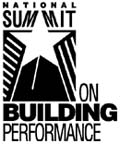News on 06 April 2001
 Traditional
ways of planning and using workplaces were challenged by leading workplace
thinkers at the Fifth Annual National Summit on Building Performance,
held in Washington DC last month.
Traditional
ways of planning and using workplaces were challenged by leading workplace
thinkers at the Fifth Annual National Summit on Building Performance,
held in Washington DC last month.
In his keynote address, Ted Leonsis, vice chairman and new products
officer at AOL, told the audience of over 200 real estate professionals,
architects, facility managers and other corporate executives that each
new technology advance, from the telephone to the microprocessor, changes
how people interact with each other at home and on the job. Today, observers
are taking note of human behavioral reactions to the Internet.
Technological advances, coupled with a globalisation trend, contribute
to where and how employees work, according to a panel of workplace experts
that included representatives of Sun Microsystems and Cisco Systems.
“This workplace is not a place – it’s a whole network
of places,” said Mattias Bergman, manager of work telepresence
at Sun Microsystems. “We’ve got to allow our people to work
– with their colleagues, their customers or alone – where
and when they need to. Their work needs to dictate (the specific location).”
Organisational structures are also changing with technology. Panelists
from Procter & Gamble and Hewlett Packard said that by sharing services
used by the entire company – such as human resources, finance,
logistics and marketing – their global organisations have improved
workplace performance and overall agility.
“The whole issue around workplace is, we want to do what we need
for the company to be productive and profitable. But at the same time,
we also want our people to be able to do the things that they need to
do anyplace, anywhere and not put them in a box,” said Wayne Matthai,
vice president of global business services at Procter & Gamble.
The Summit is sponsored by Johnson Controls, the American Institute
of Architects, the International Facility Management Association and
NACORE International.

